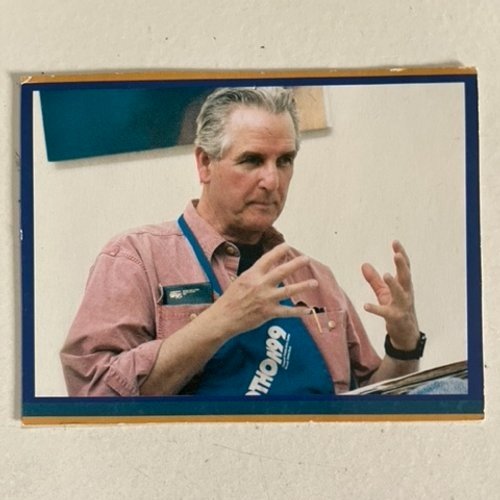 Michael Torlen is a visual artist, author, and Professor Emeritus of the School of Art+Design, Purchase College, State University of New York, where he taught painting and drawing, and received the Chancellor’s Award for Excellence in Teaching. He earned his BFA at Cranbrook Academy of Art and his MFA at The Ohio State University. For his visual practice, he draws upon his California experiences both as a boy aboard ship with his commercial fisherman father and as a crewmember on a tuna purse seiner boat. Annual plein air painting trips to Monhegan Island offer additional inspiration. Although known for his landscapes of Maine, he also has a body of semi-abstract narrative work on family, cancer, love, and death themes. Torlen has exhibited widely. His work is in the collections of the Neuberger Museum of Art, Newark Museum, Housatonic Museum of Art, Springfield Art Museum, Stetson University Museum, and in numerous corporate and private collections. It appears in David Little and Carl Little’s book Art of Acadia and in Carl Little’s Paintings of Maine.He has exhibited in New York City and reviews of his work have appeared in Art in America and Artforum magazines. In Maine, Torlen’s work is affiliated with Lupine Gallery, Greenhut Galleries, and Cove Street Arts. Various small presses published Torlen’s writing and poems early in his career. In 2012, The Brooklyn Rail issued “EYEWITNESS: Reflections on Richard Artschwager’s Untitled, 1971.” Intellect Ltd published his article, “Hit with a brick: The Teachings of Hoyt L. Sherman”; in Visual Inquiry, Learning and Teaching Art in 2013. Recent articles include “Michael Torlen on John Torreano, on painters_on_painting and “Water, Water Everywhere: Tom Burckhardt’s Studio Flood,” in the Maine Arts Journal. Additional interests include an artist-in-residency at NEOC (New England Ocean Cluster) focused on the Blue Economy and NCSA (Navigating Cancer with Science and Art), a working group of scientists and artists exploring ways to communicate cancer research and awareness to diverse audiences. Torlen maintains a studio and lives in Westbrook, Maine, with his wife, author and educator, Eleanor Phillips Brackbill. Michael Torlen is a visual artist, author, and Professor Emeritus of the School of Art+Design, Purchase College, State University of New York, where he taught painting and drawing, and received the Chancellor’s Award for Excellence in Teaching. He earned his BFA at Cranbrook Academy of Art and his MFA at The Ohio State University. For his visual practice, he draws upon his California experiences both as a boy aboard ship with his commercial fisherman father and as a crewmember on a tuna purse seiner boat. Annual plein air painting trips to Monhegan Island offer additional inspiration. Although known for his landscapes of Maine, he also has a body of semi-abstract narrative work on family, cancer, love, and death themes. Torlen has exhibited widely. His work is in the collections of the Neuberger Museum of Art, Newark Museum, Housatonic Museum of Art, Springfield Art Museum, Stetson University Museum, and in numerous corporate and private collections. It appears in David Little and Carl Little’s book Art of Acadia and in Carl Little’s Paintings of Maine.He has exhibited in New York City and reviews of his work have appeared in Art in America and Artforum magazines. In Maine, Torlen’s work is affiliated with Lupine Gallery, Greenhut Galleries, and Cove Street Arts. Various small presses published Torlen’s writing and poems early in his career. In 2012, The Brooklyn Rail issued “EYEWITNESS: Reflections on Richard Artschwager’s Untitled, 1971.” Intellect Ltd published his article, “Hit with a brick: The Teachings of Hoyt L. Sherman”; in Visual Inquiry, Learning and Teaching Art in 2013. Recent articles include “Michael Torlen on John Torreano, on painters_on_painting and “Water, Water Everywhere: Tom Burckhardt’s Studio Flood,” in the Maine Arts Journal. Additional interests include an artist-in-residency at NEOC (New England Ocean Cluster) focused on the Blue Economy and NCSA (Navigating Cancer with Science and Art), a working group of scientists and artists exploring ways to communicate cancer research and awareness to diverse audiences. Torlen maintains a studio and lives in Westbrook, Maine, with his wife, author and educator, Eleanor Phillips Brackbill. |
|
 Artist Statement
Artist Statement